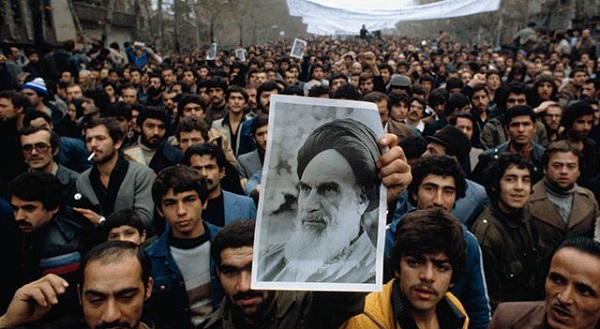
Written by Drew Taylor & Robert Wright
Directed by Drew Taylor & Larry Weinstein
Canada, 2015
As the esteemed radio host Paul Harvey used to say, “And now for the rest of the story.” From Canada comes a fascinating new documentary about the daring extraction of 6 American Embassy workers from Tehran during the 1980 Iranian Hostage Crisis. While Ben Affleck’s critically-acclaimed espionage thriller, Argo, twisted the facts in pursuit of excitement, Our Man in Tehran uses these facts to capture the real-world drama. Insightful and provocative, this is one history lesson you won’t be sleeping through.
It’s not so much that Our Man in Tehran expands upon the themes and plot threads central to Argo so much as it takes a completely different perspective on them. A decidedly pro-American affair, Argo largely ignores the Canadian contribution to the operation. After all, the Canadians may have put their lives on the line by housing these 6 fugitives, but the Americans did the heavy lifting. There are certainly concessions to be made for the different genres—a political thriller has different structural requirements than a documentary—but Affleck doesn’t even introduce the titular ‘Man in Tehran’ until the 55 minute mark of Argo. It’s ironic that Affleck’s CIA protagonist, Tony Mendez, doesn’t figure prominently into Our Man until the 55 minute mark, as well.
And who was Our Man in Tehran? Kenneth Taylor was the Canadian Ambassador to Iran, and the central liaison with the United States government during the hostage standoff. When Iranian dissidents stormed the American Embassy, taking more than 50 hostages, Taylor (and his Canadian compatriots) sheltered 6 American refugees from certain death in the street. More importantly, he conducted reconnaissance of the American Embassy compound for future military operations. Though Argo paints the Canadians as outsiders to the ill-fated rescue attempt known as ‘Operation Eagle Claw,’ directors Drew Taylor and Larry Weinstein make it clear that Ken Taylor and his colleagues were vital sources of intelligence on the ground in Iran. In other words, these guys were more than glorified hoteliers; they were critical operatives in an ongoing effort to end the larger crisis.
Based upon Robert Wright’s best-selling book, Our Man in Tehran introduces the principle characters of its drama with pinpoint precision. We get insider dirt from a few of the American hostages (CIA operative William Daugherty puts a thoughtful but defiant face behind the blindfold), several Canadian politicians (former PM Joe Clark and Foreign Minister Flora McDonald), as well as the 6 refugees who came to be known as “the houseguests.” We also get a fascinating primer on the decades preceding the Iranian Revolution. What Argo reduces to a two-minute cartoon in its opening sequence, Our Man expands to a 25 minute rundown. It’s still a barebones recounting, especially when you’re talking about revolutions and geopolitical haggling, but it gives us enough background to understand the ramifications of the civil unrest.
The filmmakers take a practical perspective on our Canadian benefactors and just how much they had to lose by doing the right thing. Their lives, as well as the diplomatic good-standing of an entire nation were on the line. Our Man in Tehran is a celebration of people willing to take risks when our institutions crumble around us. These weren’t gung-ho paramilitary operatives trained to live by their wits and “eat things that would make a billy goat puke.” These were ordinary people pressed into situations for which there was no earthly expectation for success. “People lose sight of what a hero really is,” CIA operative Daugherty observes. If Argo celebrates those heroes with great fanfare and adrenaline, Our Man in Tehran acknowledges their bravery with an appreciative tip of the cap, and they seem perfectly content with the subdued reception.
Taylor and Wright keep things moving briskly, wisely sidestepping the wonkier details of this political quagmire. They don’t point fingers or take an ideological stance. Much like their subjects, the filmmakers are content to remain unobtrusive in their dialogue. They present their facts with a slick, entertaining mix of interviews, archival footage, and simple graphics to keep us oriented.
We also get lots of juicy behind-the-scenes details. For instance, the Hollywood studio that famously fronted the fictitious Argo production was named “Studio 6” as a defiant reference to the 6 houseguests. Ken Taylor hilariously recalls his skepticism over the complexity of the sci-fi premise, as well as the garish appearance of the US operatives. Argo, of course, explains this flamboyance as being a necessary part of the Hollywood spectacle; people expect Hollywood to go overboard.
Therein lays the one weakness of Our Man in Tehran. Just as Argo neglected the Canadian viewpoint, Our Man lacks anything new from the American side of the operation. Hearing Mendez and his colleagues speak with more depth about the inner wrangling at the CIA, or haggling with Hollywood insiders for film rights would help paint a comprehensive picture of this ‘stranger than fiction’ heist.
Still, it’s hard to find much to gripe about here. Our Man in Tehran has a clear, analytical viewpoint, and yet it never feels stale or boring. You might not have the same “I can’t believe this really happened!” sensation you got while watching Argo, but you’ll gain a deeper appreciation for the stakes involved. An entire nation risked war to do the humanitarian thing. It’s a story that deserves to be told, and Our Man in Tehran tells it beautifully.




